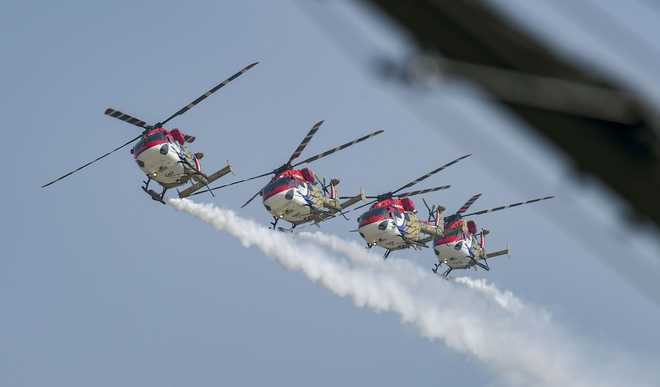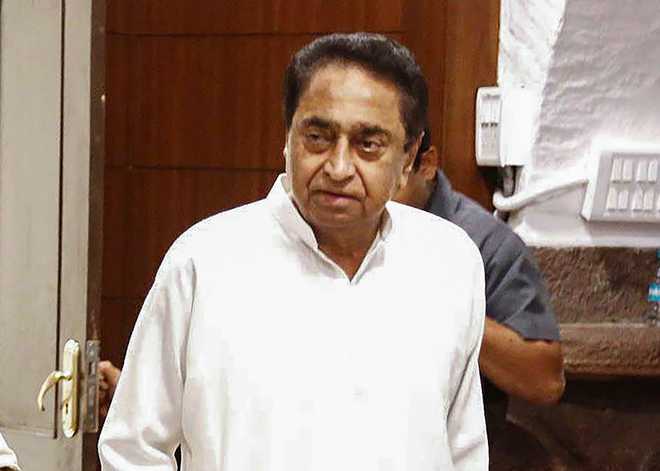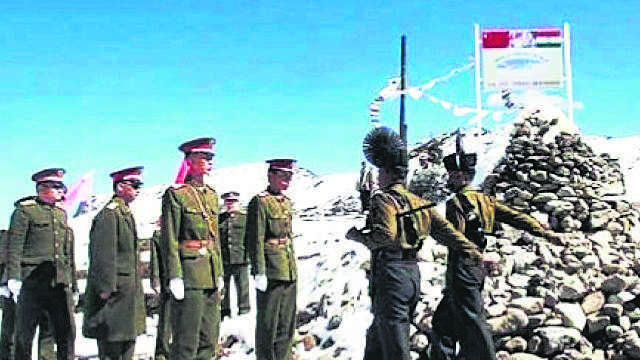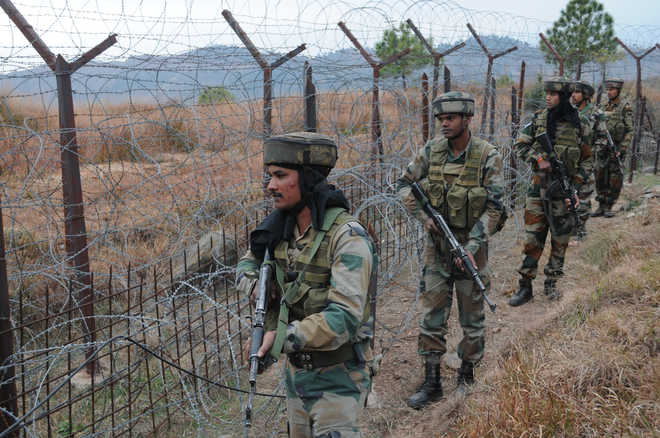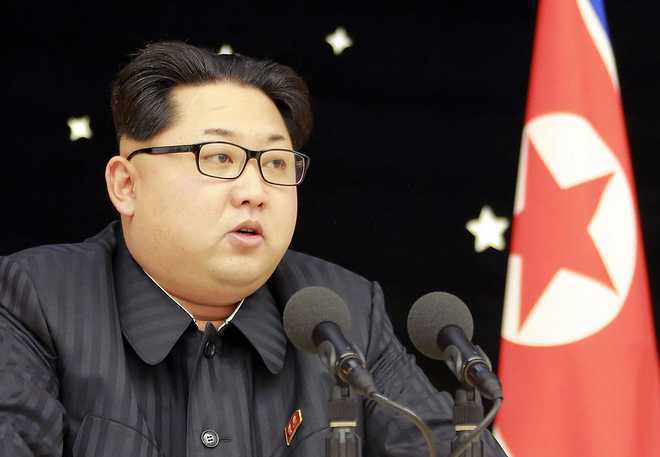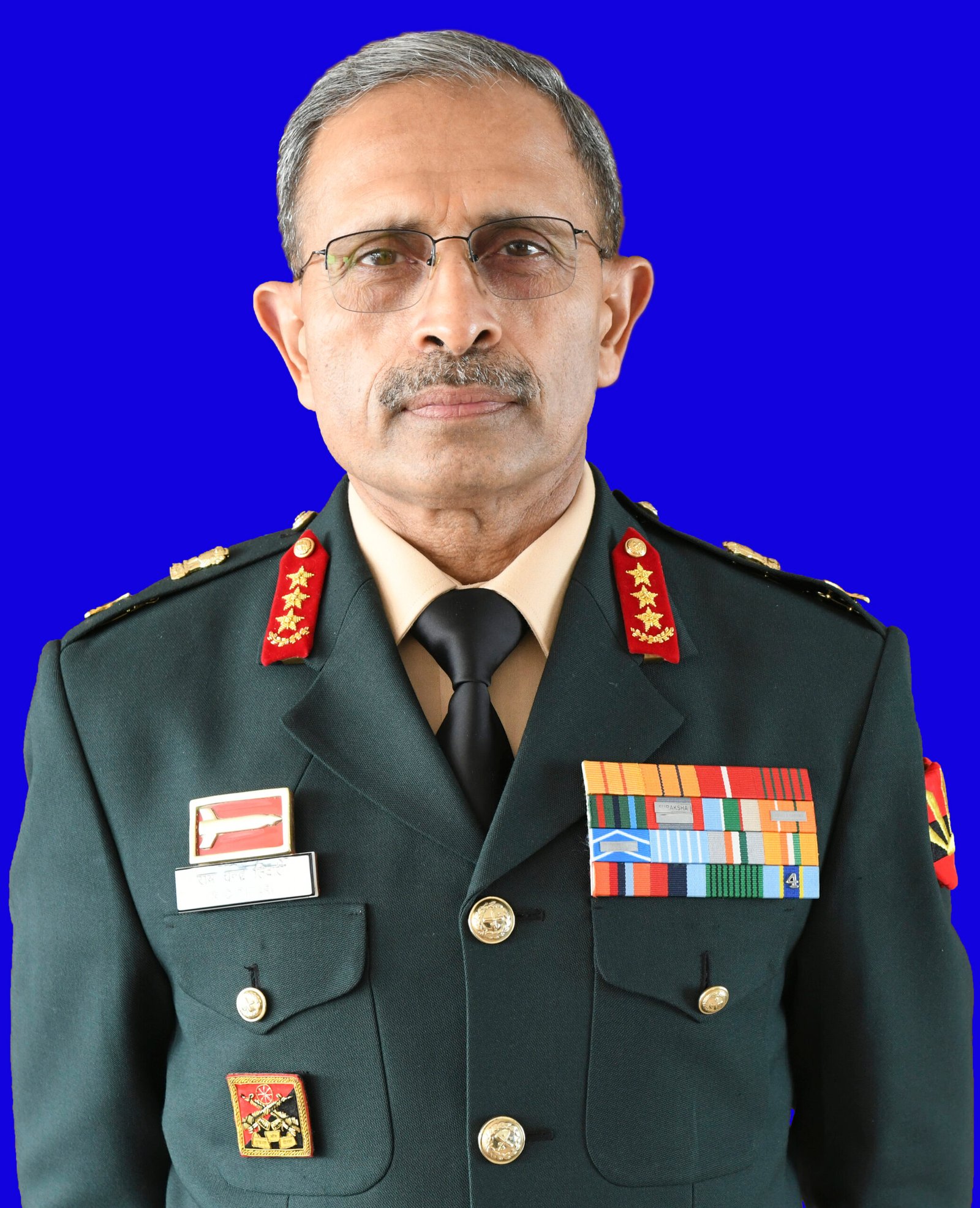
The abrogation of Articles 370 and 35 A is an epoch making decision. The article looks at the whys and wherefores and the impact of the step , which has altered the scenario at all levels, strategic, operational and tactical. Yet, it is still a work in progress
The SETTING
It was obvious that something momentous was about to take place in early Aug 2019 when the iconic annual pilgrimage, the Amarnath Yatra, was terminated prematurely and almost 30,000 armed policemen were rapidly transported to the Kashmir subdivision of Jammu & Kashmir (J&K). The top brass of the security forces (SF) appeared at a press brief a few days prior to inform the nation of the security situation and the threats anticipated to the pilgrimage which for the first time ever forced its premature termination. Rumours were already rife when Parliament convened on 5 Aug 2019. The moment was well chosen as timing of a path breaking decision is always significant. Pakistan Prime Minister Imran Khan had met US President Donald Trump on 22 Jul 2019 and the latter had unwittingly spoken of his readiness to mediate between India and Pakistan over J&K. The apparent faux pas by the US President and the indiscreet way that the Pakistan PM perceived Trump’s offer did create the right conditions for the Indian government to set up its virtual coup in the handling of the long vexed J&K issue. Pakistan’s racing fillip in its international image because of assistance to the US to fully and finally withdraw from Afghanistan, gave rise to the perception that if the government wanted to take a major political initiative further delay could see the emerging geopolitical situation overtake events.
With the above tide of events, on 5 Aug 2019 the Indian Government took the unprecedented step of abrogating not only Article 35A which was any way expected to go but also Article 370. It is the latter provision in the Indian Constitution which accorded the state of J&K a special status. Article 35A empowered the state to make its own laws and rules to determine who would be eligible to be a citizen of the state and thus related to property ownership rights too. Pertinent to mention here that while the decision may have been taken keeping various geopolitical considerations in mind the preparations for it had commenced fairly long ago, with all legal aspects well researched. The likely impact, however, could not easily be determined nor its international ramifications. There was talk of Kashmir virtually burning and even mainstream political leaders from the Valley had expressed dismay and threats. For the eventual decision on 5 Aug 2019 risk taking therefore was at a low level and the experience of 2008, 2010 and 2016 was drawn upon to take necessary precautions.
The Expectation
It helps in analysis to know what was expected from the government decision. Articles 370 and 35A were unnecessary because these helped Pakistan promote the idea of unfinished agenda of 1947 and existence of a so called ‘J&K Issue’. Acceptance of these special provisions at the instance of Sheikh Abdullah was done without resort to any strategic thought to the final outcome or how it would complicate the path towards resolution. The strategic victory India gained over Pakistan in 1971 could have been used to settle the J&K issue. Perhaps this understanding was an overkill of expectation because the times were different, and India may not have gained more than the optimum traction with the international community than it already had. The Shimla Agreement did end with Pakistan gaining more at conflict resolution stage than India, but the one thing India could well have done internally was to have removed the special status of J&K and placed it upon the path of full and final integration without any special provisions constraining it.
When Pakistan unleashed proxy hybrid war in 1989-90 in J&K as a sequel to its adopted strategy of ‘thousand cuts’ to bleed India, it very well knew that the special status of J&K within the Indian Union could always be exploited to provide the Kashmir segment a sense of being a part of a disputed entity whose interests were not served while remaining a part of India. Assiduously it worked on this, but India continued to follow status quo with even some thoughts towards further enhanced autonomy as demanded by the National Conference.
In 1994, under severe pressure from various international quarters emanating from a well-coordinated Pakistani diplomatic plan India took another unprecedented step. It messaged the world about its intent on J&K. The 22 Feb 1994 Joint Parliamentary Resolution, involving all political parties, clearly stated that the entire territory of J&K including that portion not under India’s direct control, once held by the erstwhile ruler, belonged to India and that it would aspire and work for its return to Indian control. However, it could have been more than just the tactical step it became in projecting India’s stance to the international community when severe pressure was being felt under US initiative. An abrogation of the constitutional provisions for special status at that stage may have pegged India’s claims more handsomely but those were tentative times in terms of India’s strategic confidence. The four years of discussions through back channel diplomacy on Musharraf’s four point formula through 2004-07 diluted the 1994 Joint Parliamentary Resolution to some extent. From 2008 onwards a fresh strategy was adopted by the Separatists and Pakistan’s deep state. It harped upon the combination of terrorist activity, street turbulence, promotion of alienation, enhanced focus on violent extremism (including radical religious belief) and internationalization. The Indian state’s only strategy was counter violence and lip service to engagement with the population especially the youth. Several times the security situation on ground improved, elections were held even at the grass roots (panchayat and municipal level) but empowerment at the lower levels remained elusive. The political and security stabilization could not be taken to the next level of higher integration primarily due to the absence of any initiatives or major efforts at de-alienation and de-radicalization.
My personal take was that a certain degree of risk would have to be undertaken and that the best Indian solution lay in following the approach adopted in 1994; political consensus on removal of the special provisions would ensure the isolation of the Separatists. Pakistan’s efforts to resist this in the streets would be handled with some hiccups but the international domain would hold steady once all parties were on board.
In the absence of any political consensus and a much divided polity the government settled for unilateral action which could be approved democratically through Parliament. That met the need of international approval. However, perhaps what emboldened the government to take the risk was the action it had taken over two years in attempting to dismantle the eco-system set up in Kashmir by the Pakistan deep state and the Separatists – a system which remained outside the ambit of conventional anti-terror operations.
Targeting the Eco system
The Ministry of Home Affairs (MHA) had reported to Parliament that in first six months of 2019 the situation in the state of J&K has witnessed improvement with terror related incidents seeing a 28% decline, infiltration reduced by 43%, local recruitment declined by 40% and neutralization of terrorists increased by 22%. To a casual observer this should have been a time for celebration with deduction that the back of the resistance and the support from Pakistan had both been effectively neutralized. To an experienced practitioner it was time to analyze deeper to see what it would take to sustain the apparent stability achieved. The results were due to a combination of Operation All Out which commenced in 2017, and the focused targeting of parts of the eco-system. A terror based ‘Proxy War Ecosystem’ is the nexus of politics, media, and shady third sector organizations. It may include NGOs, lawyers, academics, intellectuals and bankers.
The eco-system is too complex to be taken apart all at once as there are linkages within linkages. Its constituents are firstly the human resource elements; the terrorists or those who have picked up the gun or been paid to do so. Second is the financial networks and conduits without which no violent movement can sustain for long. Without deep pockets no terror related separatist and anti-national movement can survive, and finances come from clandestine sources through a plethora of means. Third is the network of over ground workers (OGWs) who are the visible face as against the invisible face of the terrorists who act covertly; businessmen, government servants, lawyers, academics, media personalities and even politicians. They provide the wherewithal to fuel the movement and in many cases are organized in a structured way dealing with propaganda, rabble rousing and helping muster crowds. The fourth aspect is ideology which fuels the mind, creates visions such as those of caliphate, increases alienation and helps create greater affinity with Pakistan. In the current case the ideological intent of Pakistan and the separatists has been to dilute the middle path of Sufi belief and promote the more radical philosophy of organizations such as Ahle Hadith.
This eco-system in Kashmir has had ways of sustaining and growing even when there is a break from violence. It’s the system one encounters everyday if you live in Kashmir. However, it’s not something which can easily be targeted and more importantly without convergence of interests between the centre and state. It’s also the system through which Pakistan calibrated the situation. It’s only about two years ago that finally the NIA was tasked to go after these networks. The NIA has no doubt done some excellent work, but the system is just too deep rooted and extremely well etched for it to be made ineffective so soon. The decision to go after the OGWs, target the financial and other networks and disallow the separatists the space to function by emasculating them has been the hallmark of the last one year. It cannot easily be statistically reported, especially when it is work in progress. However, its weakening has ensured that along with detention of the usual rabble rousers and deployment of armed police in larger numbers the scope for organization of street protests dwindled almost immediately. The area where more effort over an extended period of time needs to be placed is counter radicalization.
The impact of the decisions of 5 Aug 2019 may be felt in many domains but primary among them are internal security, the LoC, governance, political environment of J&K and international opinion.
Internal Security
In the field of internal security, it is yet early to predict although preceding the decision care was taken to tighten loose ends which could trigger disturbances instigated by separatists. A fear existed that the response of the mainstream polity could also be unpredictable. Although distasteful, detentions took place as precautionary on the basis of past experience when Kashmir had seen major turbulence in the streets in 2008-10, deliberately instigated by exploiting triggers. Again in 2016, post the killing of Burhan Wani the streets went on fire, the separatists were hugely emboldened and the public fear of the army and police vanished, with deliberate breaking of curfew and large scale deaths and grievous injuries in the streets. The use of pellet guns by the police led to several people being blinded drawing an international furore against alleged human rights violations; exactly what the separatists hoped for. This time with lessons well learnt Kashmir was evacuated of tourists and other non-Kashmiris well before to avoid any reprisals which could have led to an unstoppable spiral against Kashmiris around the country jeopardizing all the gains of the decision taken by the government. Of course, this entire exercise could have been done differently in a different context; by a government campaign over several years, to explain the benefits of full integration without awkward conditions, to the people. That became impossible due to the ongoing proxy war sponsored by Pakistan and the disinformation campaign it so astutely played out through the ISPR. The risk of efforts towards consensus appeared to be perceived as potentially compromising on secrecy.
Threats to internal security are all based upon public perception, politics and instigation from Pakistan. Thus far peace has prevailed with partial and progressively diluting population control measures in place and only partial withdrawal of communication services with no attempts at breaking of curfew. The protest industry of Kashmir sponsored by Pakistan, directed by the separatist leaders and led in the streets by increasingly younger men and some women needs a system to be in place; it is not on auto mode. This eco-system had taken several years to create and extended down to the tehsil and even block levels. It included the universities, faculties of schools and colleges, media owners and prominent journalists, bank officials and hundreds of non-descript, low profile people working as OGWs. The best example to understand this is the speed and alacrity with which the Baramula-Kupwara road can be closed to Army convoys running logistics to maintain the troops at the LoC. An accident, a small act of misdemeanour or even the killing of a high profile terrorist could be used to stall movement and commence stone throwing for a couple of days. Efforts by security forces and agencies to neutralize the OGWs always seemed to come to naught. Thoughtfully, from 2017 this system was targeted by the government from Delhi and later directly under Governor’s rule. It is too complex to be undone in a hurry and will need several years of professional effort to take it down.
It was not possible to achieve full neutralization in the time available but the separatists were isolated and their hold over the system weakened. The test of this will emerge once normalcy is gradually introduced in greater measure. However, indicators are already available. With clandestine financial networks dented money may not find its way into hands of instigators; preventive detentions have as it is reduced their nuisance potential on the streets. In the event of the government strategy not working, there are enough forces on ground to cater for contingencies; the outcome then will be unpredictable but the chances of that appear bleak.
Internally the other threat is mainly from IEDs because that is one domain where a determined terror module may sneak past all security and create havoc of very serious proportions; recalling Pulwama and the attack on the J&K Assembly in 2001.
Effect at LoC
The LoC will be active in spurts. It has not reached any anticipated level yet because Pakistan is on hold due to pending external factors. Among them it is hopeful of the FATF decision, US dependence on it for continued talks with Taliban and expected tranches of the IMF loan. Usually around the time when the Pakistan PM or other representative addresses the UN General Assembly activity at the LoC is ratcheted to higher levels to project chances of war between two nuclear armed states. It has made up for that through its high pitched rhetoric on possibility of nuclear war.
The LoC, however, may have been comparatively quiet in relation to exchanges of fire and ceasefire violations but infiltration attempts have gone up manifold. These are directly linked to the intent of increasing terrorist capability and numbers in Kashmir and to make up shortfalls in leadership. It is expected that some regular Pakistan Army cadres may also infiltrate to provide the elusive leadership particularly in North Kashmir which has been uncharacteristically quiet for some time.
Governance
With administrative reorganization leading to Union Territory (UT) status for J&K it is expected that development through better governance will become an important aspect for future narratives. More direct oversight on various projects will hopefully curb corrupt practices and ensure delivery of authorised funds to the right quarters. The large outlay of central assistance to J&K must continue and the impact of better governance through balanced allocations must be palpable across the UT. This by itself will make a major difference in perception and communicate India’s strong desire to see prosperity in J&K.
To really qualify for a landmark decision the constitutional and administrative changes must deliver quality governance and that too in a very short time. A couple of things will be needed early enough and I am not rooting for restoring of the electoral process in that time frame. The return of Kashmiri Pandits must be discussed with their leadership and ways of ensuring this in an environment of existing mistrust must be sought.
Political Activity
It is important to restore political activity in J&K to involve the people and overcome the trauma of the perceived lockdown. This will prove to be the most challenging task ahead as it is yet to be determined how mainstream political parties are going to emerge from the events of this period. There is a perception that Panchayati Raj will step in to take the place of mainstream political activity, with more direct empowerment of the people. This can only remain a hope because getting such activity off the ground is unlikely to take place in a hurry. A level of rapprochement with mainstream political parties or the creation of alternatives is a must but both have their constraints. A period bereft of political activity may emerge akin to 1990-96 but without Separatist politics being allowed to rule the roost. This is a domain where greater credibility will need to be garnered for better international endorsement. Electoral activity in the true sense appears some distance away. Therefore, an elected government taking charge anytime in the future seems unlikely.
International Implications
On the international plane the impact has been positive across the international community and even China although initially negatively disposed has chosen not to be excessively vociferous. India cannot take its undoubted diplomatic success for granted even after the session of the UN General Assembly where PM Narendra Modi will speak. The diplomatic pressure on Pakistan must be maintained relentlessly through not just diplomacy but by direct outreach to intellectual communities in other important countries, particularly in the Middle East, US, UK and ASEAN countries. Chinese President Xi Jinping visits India in a few weeks. That opportunity must be used to drive home to China how stability in J&K contributes to its interests, especially when there is restiveness in Xinjiang.
What India needs to be mindful about is the fact that while its undoubted international status is at a high there is no permanence in international support. Pakistan’s diplomatic and information based efforts have for a change come cropper but it has managed to throw up the J&K issue internationally even if it has not gained traction in support of its cause.
PoK
There is much talk that the only pending issue of the J&K problem is the extension of India’s control over PoK. While it is a good psychological tool to brow beat Pakistan with, the reality of this happening anytime soon is not evident. PoK technically includes Gilgit-Baltistan, a region not most effectively in Pakistan’s control but of immense strategic importance to China due to the presence of the China Pakistan Economic Corridor (CPEC) and proximity to the Chinese territory of Xinjiang. For Pakistan all this extends into the domain of existential threats. It is far more sensible to focus on the full and final integration of the territories under India’s control even while the pressure on Pakistan is maintained in relation to PoK.
The Hearts and Minds Game
The one aspect which security managers in India need to be concerned about is the enhancing alienation and angst evident in the population in Kashmir. While many assume (and it is not entirely wrong) that there is a silent groundswell of support for India it is the element which is alienated which rules the roost. In this regard it may be advisable to extend the Indian Army’s military civic action (MCA) project, Operation Sadbhavana to a much higher level of engagement of the public at the strategic level. The MCA project is an essential part of any counter insurgency campaign and has achieved some impact. Involvement of the full government machinery in a typical counter hybrid proxy war campaign, with an ‘all of government’ approach may be the answer; the concept thereof will need much larger think through.
Overall, the momentous decisions of 5 Aug 2019 have altered the scenario at all levels, strategic, operational and tactical. Yet, this is still work in progress. Resting on laurels of a fine decision won’t deliver. There is many a mile to go before we sleep.





















































